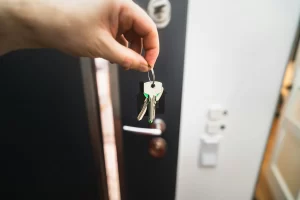Key Takeaway
This new approach has changed the traditional property investment, which has been expensive and demands large down payments and ongoing management work. This article explains how this method makes real estate accessible to daily investors at lower costs, alleviate the spread of risks, and how it offers a steady income with less headaches.
The good old days of acquiring hundreds of thousands of dollars to invest in real estate have come to an end. Fractional property investment has paved the way for cementing changes that allow regular people to own small pieces of valuable properties. Statistics in 2025 recorded that 97% of home buyers are now finding properties online, which signals a shift in how we view real estate markets.
What is Fractional Property Investment?
Imagine buying a slice of pizza instead of the whole pie because it’s cheaper. That is a fractional property investment. You purchase a small percentage of the property and share ownership with other investors, rather than the entire building. Every investor shares the costs and profits, depending on their ownership stake.
This idea utilizes tokenization, where a property’s value is divided into digital tokens using blockchain technology. These tokens individually represent each investor’s share of the property and are similar to digital certificates that prove ownership of a building. The owner also has the upper hand in buying, selling, or trading these tokens through specific online platforms.
However, this differs from a Real Estate Investment Trust, wherein a pool of money is used to purchase multiple properties. The process of tokenization starts with a company buying a property, dividing it into shares, and selling them to individual investors.
By means of fractional ownership, you know exactly which property you are investing in and have more say on what happens to it.
The Technology Behind Tokenized Real Estate
Blockchain technology enabled fractional real estate possible. This can be thought as a secured digital record book in which no one can modify or cheat. Smart contracts are similar to digital agreements that automatically handle payments and split profits among owners, eliminating the need for lawyers or banks.
By the time a property gets tokenized, computers convert the value into digital shares so people can buy them online. These online platforms are designed for safety and user-friendliness, from payments to tracking of who owns shares. The system diminishes the roles of middlemen and the like, making the process faster and cheaper.
The best part? Transparency. Everyone can see what is happening with their investment, as all transactions are recorded permanently, eliminating the possibility of hiding money or falsifying information about what has occurred.
Breaking Down Barriers to Entry
For regular people, investing in traditional real estate can be challenging. Buyers need a down payment of 15% to 25% to acquire an investment property, in addition to closing costs, repairs, and ongoing management expenses. People who live far also cannot invest in properties, which makes it challenging to deal with tenants.
The good thing is that fractional investment addresses these problems. You can start investing with only $100 to $1,000. You can use this to invest in commercial buildings, luxury apartments, or industrial warehouses—locations that were only available to the upper class.
You also don’t have to worry about maintaining your properties as professional property managers handle all the day-to-day work, including finding tenants, collecting rents, and fixing problems.
Diversification and Risk Management Benefits
One of the most significant benefits of fractional investing is the ability to spread money across different properties located in various locations. You can own pieces of property in varied cities and several kinds of estates rather than putting all your investment in one building.
Properties that are usually available for rent, such as apartments and houses, are easy to manage. Commercial properties such as office buildings and shopping centers can also offer steady income from business tenants. Warehouses, an example of industrial properties, can be rented as a storage space for companies. These kinds of fractional shares are easier to sell than whole properties.
Passive Income Generation
Fractional property investment generates income without shouldering much effort on the owner’s part. The money, upon the tenants’ payment, gets divided among the owners based on their share of ownership. This is also where property management companies play a role in handling tasks such as finding tenants, collecting rent, and maintaining the building.
The smart contracts automatically allocate the rental income shares to the owners on a monthly or quarterly basis. Similar to traditional real estate investing, the property’s value goes up over time. This passive income approach enables you to earn from real estate while having a regular job or business.
Challenges and Considerations
Fractional property investment is not all rainbows. In fact, the biggest challenge is limited liquidity, which can make it difficult to sell your shares quickly if you need money immediately. You also have less control over deciding on your property since you share ownership with others.
Apart from that, there are also uncertainties on rules and taxes as the regulatory landscape is still developing. Technological risks are also inevitable, as digital platforms could face security issues. For these reasons, it is essential to thoroughly research the properties, management team, and especially the platforms before investing. When researching, ensure you understand the fees, the decision-making process, and the procedures for selling your shares.
Nevertheless, the fractional real estate market is increasing rapidly. Challenges are inevitable but the advantages of lower costs, professional management and diversified exposure to real estate makes this a good ladder in building income.
Several experts predicted that by 2030, it could reach trillions of dollars as more people discover this as an investment option. Major companies are also constructing platforms to capitalize on this growing investment. Technology also enabled this to transcend borders, and eventually, fractional ownership becomes a normal investment.



